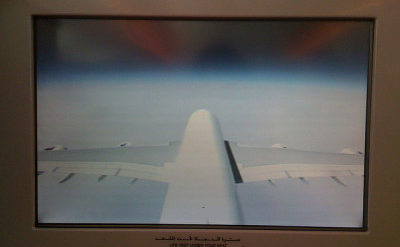
Here’s How Open Academic Tests Would Work
We should modernize how we approach testing in our public schools and colleges.
Think about flight simulators. When U.S. Navy instructors train a new pilot they would never dream of giving her the keys to a $300 million fighter jet if she gets a passing score on a bubble (multiple choice) test. No, when it comes to something that really matters, such as who gets to fly an expensive jet, bubble tests don’t cut it. Instead, the Navy uses sophisticated flight simulators. Would-be Navy pilots must first demonstrate their skills in simulators before they get a real plane.
Thanks to recent technological advances we can now do pretty much the same thing for a wide variety of academic skills at virtually every level of instruction. What’s more, building and continuously improving public, open, academic flight simulator-like assessments will cost far less than we spend on all those antiquated bubble tests today, make learning outcomes much more transparent, and enable competition that improves the quality of teaching and learning over time.
An algebra flight simulator-like assessment might, for example, simulate real world situations with obstacles to overcome that can only be solved with algebra skills. The situations would change each time the test is served but the skills assessed would remain the same. If someone can ace the simulator, it means they possess the requisite skills. Chemistry students would face similar, dynamically simulated real life problems that could only be solved by someone who knows whatever level of chemistry is being tested. Most science, technology, engineering and math skills, along with many language arts subjects, could easily be assessed in this way.
Public educational agencies could band together to fund the creation of these open source, flight simulator-like assessments for free public use, starting with math courses, such as algebra and geometry and science courses, such as chemistry and physics, because the skill sets in those disciplines most readily lends itself to assessment via simulator-like environments. The online simulators must be open source and non-proprietary so they can be maintained and improved by any vendors or technologists. (When we use taxpayer money to build brick and mortar schools we don’t give the front door keys to the general contractor who built the school and let the contractor sell each of us a secret password to enter the building. The same rules should apply when we use public funds to build digital schools and tests: no secret passwords to get in).
Here is the thing about flight simulators: there is no way to cheat. They are sort of like old-fashioned pinball machines in that way. I can be a pinball wizard and you can watch me play. But that won’t do a darn thing for you when it’s your turn to command the flippers. Free, public, open source academic flight simulators that generate random, dynamic scenarios will eliminate the duplication of effort, waste and expense commonplace in academic testing today; creating test questions, banks of questions, hiding the answers, changing the questions, changing the answers, around and around, my goodness when you think about it, it’s truly a wonder that any teaching ever happens with all the mindless, rote effort that must go into conventional academic testing methods and related security procedures. Flight simulators wipe all that away.
Open, free, public, flight simulator-like academic assessments will yield another substantial benefit: they will give educators and students a common finishing line they can use to assess progress across different groups of students and schools. As a result, schools and other educational providers will be able to compete based on how quickly and reliably they can help students master subjects. I can see the ads already: “Come to XYZ Community College, where our average student masters the MIT Advanced Physics Simulator in less than six months!” We will help more students find the right path when we illuminate the finishing line for academic progress and excellence. Free, open source, flight simulator-like assessments can do that, too.
There may be some subjects where mastery is more difficult to assess in simulator-like environments, such as history, sociology, and other social sciences. But even those disciplines may benefit from simulations once the lower hanging sim fruit in the so-called hard sciences is harvested. In the meantime, though, we could get rid of many of those stupid, counterproductive bubble tests, save money, make sure high school graduates are better prepared for college level work in math and science, and develop a new public digital infrastructure that would do for education in this century what brick and mortar schools did for us during the last century. In fact, if the simulations are good enough learning might even become fun again.
The technology to do this is all available today. The money we need is already collected in our taxes or is being spent on other much less useful pursuits, such as buying commercial textbooks or passwords to proprietary software. The only thing missing is leadership.


